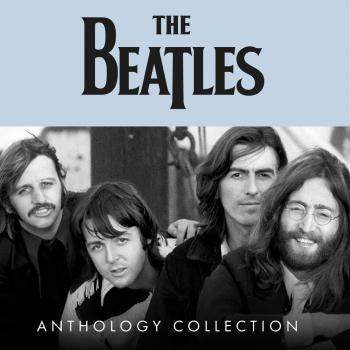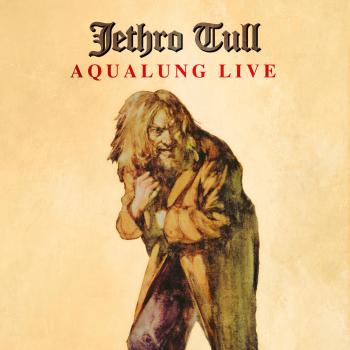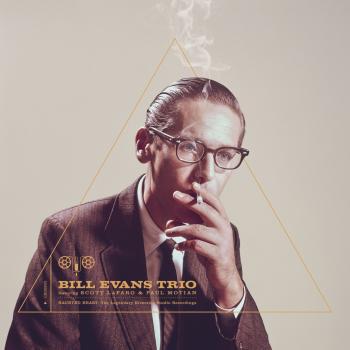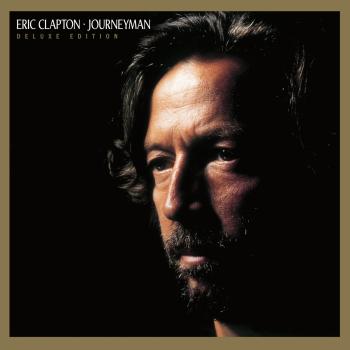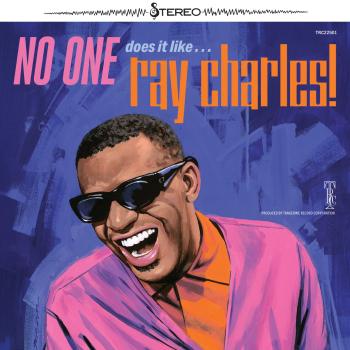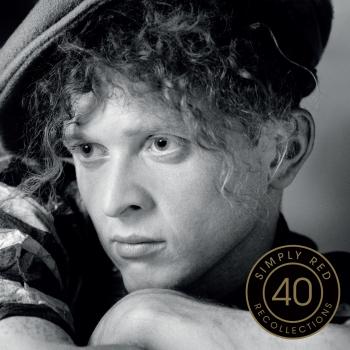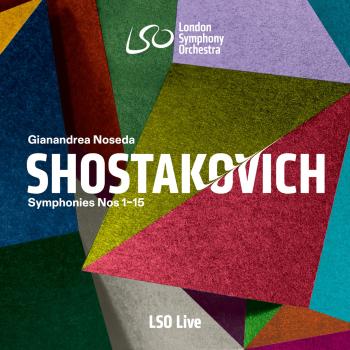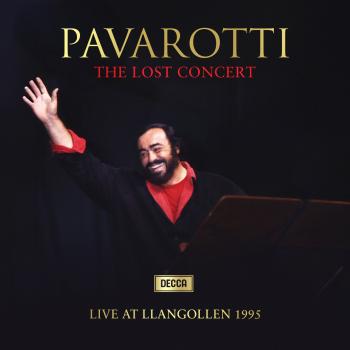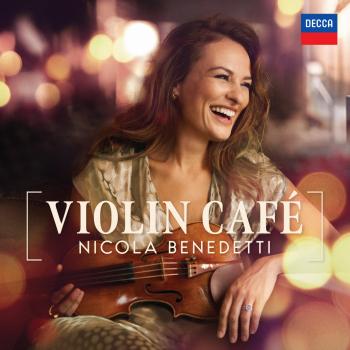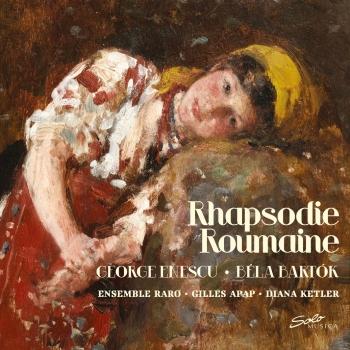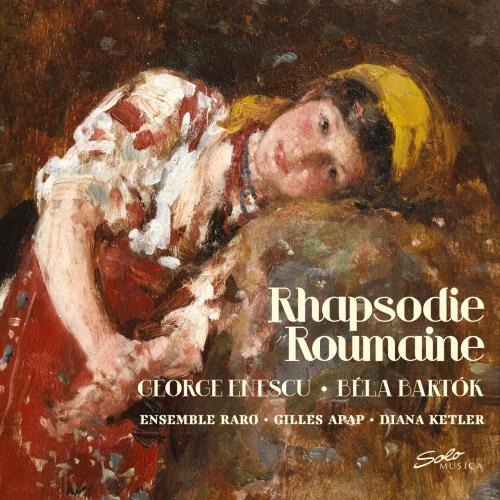
George Enescu: Rhapsodie Roumaine Ensemble Raro
Album info
Album-Release:
2018
HRA-Release:
26.01.2018
Label: Solo Musica
Genre: Classical
Subgenre: Chamber Music
Artist: Ensemble Raro
Composer: Béla Bartók (1881-1945), George Enescu (1881-1955)
Album including Album cover
I`m sorry!
Dear HIGHRESAUDIO Visitor,
due to territorial constraints and also different releases dates in each country you currently can`t purchase this album. We are updating our release dates twice a week. So, please feel free to check from time-to-time, if the album is available for your country.
We suggest, that you bookmark the album and use our Short List function.
Thank you for your understanding and patience.
Yours sincerely, HIGHRESAUDIO
- George Enescu (1881 - 1955):
- 1 Rhapsodie Roumaine No. 1 in A Major, Op. 11, No. 1 12:51
- Béla Bartók (1881 - 1945): Hungarian Sketches, Sz 97:
- 2 I. An Evening in the Village 02:42
- George Enescu (1881 - 1955): Violin Sonata No. 3 in A Minor, Op. 25:
- 3 I. Moderato malinconico 08:10
- 4 II. Andante sostenuto e misterioso 08:01
- 5 III. Allegro con brio ma non troppo mosso 07:54
- Béla Bartók (1881 - 1945): 44 Duos for 2 Violins, Sz 98:
- 6 No. 21, Colinda I 02:07
- 7 No. 44, Ardeleana 01:46
- 8 No. 7, Dans Valah I 00:46
- 9 No. 40, Dans Valah II 00:45
- 10 No. 32, Dans Maramuresean 00:39
- 11 No. 38, Invârtita batrânilor 00:42
- 12 No. 29, Colinda II 00:42
- 13 No. 31, Colinda III 00:41
- Béla Bartók (1881 - 1945): Romanian Folk Dances, Sz 56:
- 14 I. Joc cu bata. Allegro moderato 01:28
- 15 II. Braul. Allegro 00:40
- 16 III. Pê-loc. Andante 01:31
- 17 IV. Buciumeana. Moderato 01:39
- 18 V. Poarga romaneasca. Allegro 00:28
- 19 VI. Maruntel. Allegro 00:56
- George Enescu (1881 - 1955):
- 20 Nocturne Ville d'Avrayen for Piano Quartet 05:56
Info for George Enescu: Rhapsodie Roumaine
This recording features two emblematic works by George Enescu. The Romanian Rhapsody No.1 is presented in a new Piano Quartet arrangement by Thomas Wally, commissioned by the Ensemble Raro. The enigmatic violinist Gilles Apap together with the pianist Diana Ketler perform arguably Enescus greatest masterpiece, the Third Sonata for Violin and Piano dans le caractere populaire roumain, a work of extreme beauty and intensity. Bela Bartoks ever popular Six Romanian Dances for Violin and Piano and a selection from his Violin Duos, performed here on two violas, capture the unique and compelling spirit of the Romanian traditional folk music. Enescus recently rediscovered Nocturne Ville dAvrayen for Piano Quartet is a souvenir of the composers lifelong friendship with his student, the great Yehudy Menuhin. The violinists Gilles Apap and Alexander Sitkovetsky, the violists Razvan Popovici and Christian Nas, the cellist Bernhard Naoki Hedenborg and the pianist Diana Ketler transport the listener to the multi-layered world of the Romanian musical landscape, where joy and melancholy are inseparable and heaven is to be found both under the feet and over the head.
Ensemble Raro
Gilles Apap, violin
Ensemble Raro
was formed in 2004 by four extraordinary young musicians: pianist Diana Ketler, violinist Alexander Sitkovetsky, violist Razvan Popovici and cellist Bernhard Naoki Hedenborg. Their goal is to create unforgettable musical moments and to combine innovative approach with rich European tradition of intimate and sincere chamber music making. In 2011 the Ensemble Raro welcomed new members: violinists Alina Pogostkina and Erik Schumann, clarinetist Thorsten Johanns and hornist Olivier Darbellay.
Ensemble Raro is the ensemble en residence at the Chiemgauer Musikfrühling Festival in Germany, SoNoRo Festival in Bucharest and Arezzo, Kobe International Music Festival and Pèlèrinages in München. By creating this festivals, the ensemble has full artistic liberty: it improvised with DJ’s, created multimedia shows with VJ’s from Japan and Romania and developed literary soirées on love, Paul Wittgenstein, Emanuel Schikaneder and Bulgakow’s Master and Margarita with the actor Karl Markovics and the writer Lea Singer.
Ensemble Raro’s partners in various chamber music formations included Radovan Vlatkovic, Juliane Banse, Daishin Kashimoto, Konstantin Lifschitz, Frans Helmerson, Mihaela Martin, Baiba Skride, Boris Brovtsyn, Marlis Petersen, Mark Padmore, Benjamin Schmid, Philippe Graffin, Jan-Erik Gustafsson and Gilles Apap.
The Ensemble recently performed at the Rheingau Musikfestival, Lucerne Festival, Wiener Festwochen, in Boswil Summer Festival and Geneva Amadeus Festival in Switzerland, St.Gallen Festival and Gmunden Festspiele in Austria, Riga Chamber Music Festival in Latvia, in Schloss Elmau and Kulturwald Festival in Germany, Spoleto Festival and Cantiere di Montepulciano in Italy and in Music at Plush Festival/UK.
Since 2006 the Ensemble Raro tours every year Japan. The Ensemble Raro gave debut recitals at the Konzerthaus and Musikverein in Vienna, the Musashino Hall in Tokyo, the Carnegie Hall in New York and the Wigmore Hall in London.
Ensemble Raro is actively involved in performing contemporary chamber music repertoire. They gave a British and German premieres of Peteris Vasks’s Piano Quartet. Their performances of Walter Braunfels’ and George Enescu’s works in Pèlèrinages series in Munich received a high critical acclaim. Composers like Dan Dediu and Santa Ratniece have composed new works to the Ensemble Raro.
Besides regular collaboration with the Bavarian Radio, Ensemble Raro’s performances have been broadcast on BBC Radio 3/UK, NHK/Japan, SWR/D, TVR, RRC and RRM/RO, DRS2/CH, LVR/LV and RFI/F.
In the last years the Ensemble Raro released five CDs. The first CD Songs and Dances of Life was described by Radio France International as “an exceptional project”. About Canti drammatici featuring piano quartets of Brahms and Vasks, the renowned Gramophone Magazine wrote: “Ensemble Raro bring a feisty application, impeccable polish and lively imagination to Brahms's stormy C minor Piano Quartet...” The Seasons was released in autumn 2008 in cooperation with the SoNoRo Festival and features the seasons by Antonio Vivaldi and Astor Piazzolla. In 2013 another CD was be released with chamber music by Ernst von Dohnányi, Josef Suk and Antonín Dvořák. The newest CD of the Ensemble Lived and Dreamed was released in 2015 to great acclaim.
The Ensemble Raro regularly gives masterclasses in Romania, Italy, Ukraine and Japan and developed Sonoro-Interferences, an extended educational project dedicated to the most talented young Romanian musicians, which has been taking place from 2009 also in Italy, Ukraine and Germany.
Lately the Ensemble Raro performed in Athens, Montepulciano, Bucharest, Kobe as well as in the Carnegie Hall in New York, the Kennedy Centre in Washington and the Villa Musica Foundation in Mainz.
Gilles Apap
Called "the exemplary Violinist of the twenty-first century" by Yehudi Menuhin, the French violinist Gilles Apap became known around the world not only for his virtuoso interpretation of the standards of the classical repertory, but also for his interest in all kind of traditional music.
Born in Algeria and raised in Nice, Gilles Apap studied in Nice and Lyon. He came to America to attend the Curtis Institute, and chose to settle in California where he held for some years the position of the concertmaster of the Santa Barbara Symphony Orchestra.
His talent was recognized by Yehudi Menuhin in 1985, when Apap first brought himself to the attention of the great pedagogue by winning the Contemporary Music prize at the prestigious International Menuhin Competition.
Nowadays, Gilles Apap's engagements include concerts all over the world. He plays as a soloist und quite often also as musical director with well known orchestras around and appeared at famous festivals. With his trio, “The Colors of Invention” Apap is performing concerts throughout western and eastern Europe, the U.S., South America, Japan and Russia.
Aside from performing, Apap has taught at the Menuhin Academy Gstaad, the Yehudi Menuhin Forum Bern (Switzerland) and at the Menuhin School, London and holds numerous masterclasses and workshops every year at festivals and academies worldwide.
He recorded three CDs for Sony Classical, but in 1999 he built his own record label Apapaziz Productions. Since then, he has released seven albums. Finally, "sans orchestre" his third chamber music album with The Colors of Invention was presented on the occasion of a tremendous successful concert at the Kammermusiksaal of the Berliner Philharmonie.
Bruno Monsaingeon has made two documentaries featuring Apap: "The Unknown Fiddler of Santa Barbara" and "Gilles Apap Plays the Mozart Third Violin Concerto" recorded with the Sinfonia Varsovia and produced by ARTE. Another film, "Apap Masala" has been produced in spring 2004 in the US and in India.
This album contains no booklet.

